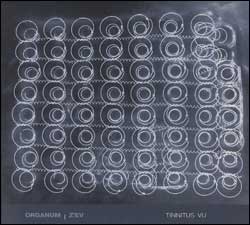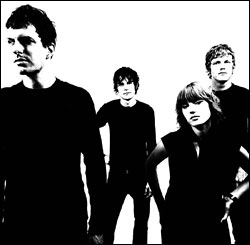Percussion instruments as we know them today are manufactured tools whose prices reflect their captive existence in a seller’s market. Why spend hundreds of dollars needlessly when nearly everything in the world makes some sort of sound when struck, stroked, or shaken if, say, your neighbor wants to sell you a few dozen hubcaps for 10 bucks? Stealing it is better still. Theft, like dumpster diving, is an important part of the tradition that emerged during the found percussion spike of the ’80s, both as political act and matter of necessity.
Like their American progeny—the Beatnigs and Crash Worship in particular—Einstürzende Neubauten, Test Department, and SPK all had anarchist leanings, a healthy disrespect for conventions of property, and no money, meaning they initially followed the path of the finder. Out of the decade’s countless metal-and-plastic banging ensembles, these bands enjoyed a modicum of popularity and a reasonable amount of club play. Neubauten and Test Dept.’s edge in the marketplace emanated from videos distributed by the ubiquitous RockAmerica pool; SPK had an album on Sire, with a single—”Metal Dance”—that beat-mixed perfectly out of “Blue Monday.”
But found percussion originated long before the ’80s: hundreds of thousands of years ago, when one of our remote ancestors first coaxed a beat out of a hollow log with a rock or stick. The practice surged in the Paleolithic Era, evolved slowly until the advent of manufactured goods, and got a big boost in 1939 with John Cage’s “First Construction (for Metal),” which included parts for anvil. Cage, like most of the conservatory types who followed him, had only a passing interest in found percussion. Not so for Stefan Weisser—better known as Z’ev. A formally trained percussionist whose pursuit of salvaged sound-making implements dates back to the mid-’70s, Z’ev has contributed his refined rhythmic sensibilities to collaborations with Glenn Branca, Rudolph Grey, Psychic TV, Toshinorio Kondo, and the Hafler Trio’s Andrew MacKenzie, as well as releasing 20-plus solo albums and performing extensively in the U.S., Europe, and Japan.
Like many of his colleagues, Z’ev works with electronics, too. In fact, on the newly released Tinnitus Vu (Touch), a set of dense drones realized in collaboration with Organum’s David Jackman, it’s impossible to distinguish the electrons from the percussive bits. Not that it matters—Z’ev, whose tastes run toward stainless steel and titanium (the Cristal of metal percussion)—would never drop a sonic cheese log like the “rave in the cave” scene from The Matrix Reloaded (although the subsonic rumbles on Vu‘s imaginatively monikered “Track 2” could easily have originated in Zion). Anyone looking to dip a toe in the sea of DIY drumming would do well to pick up a copy of his book, Rhythmajik. Just go to his Web site, www.rhythmajik.com, where, typically enough, it’s free for downloading.








